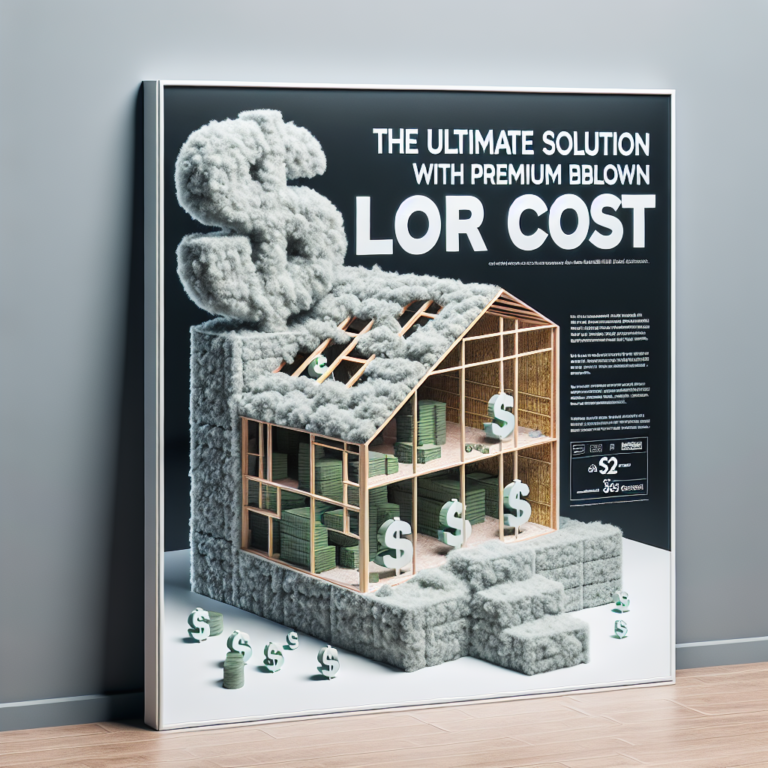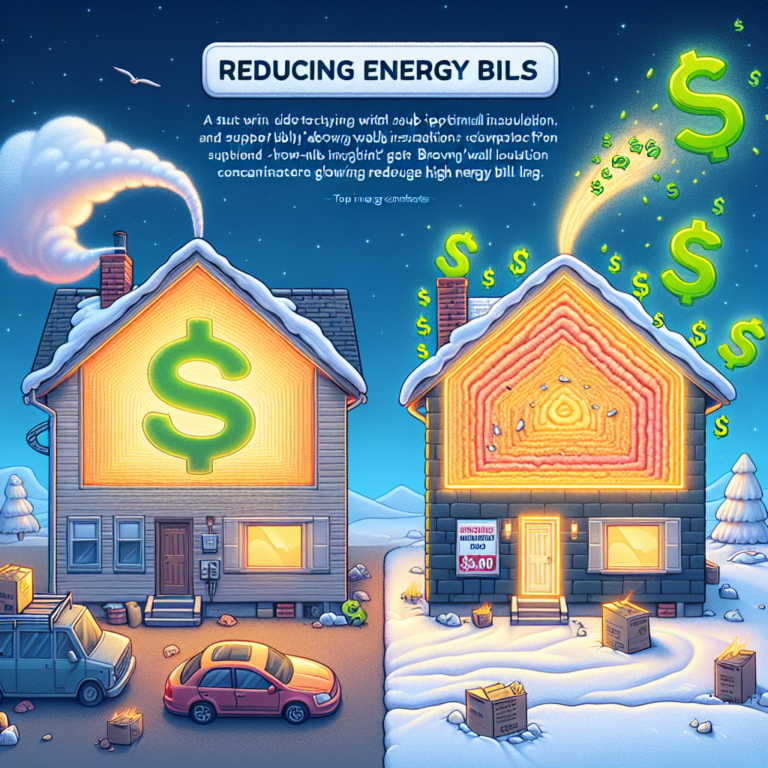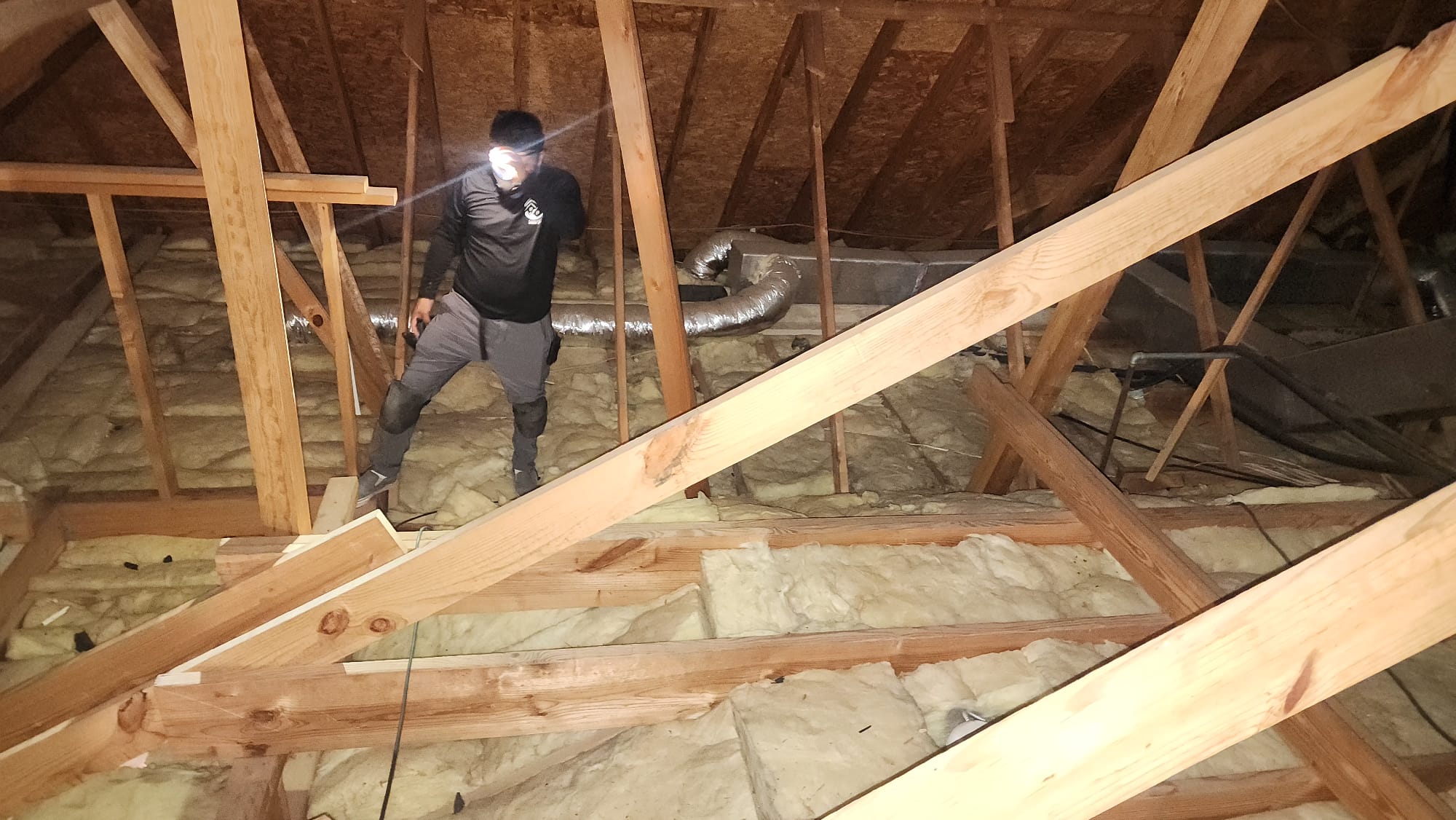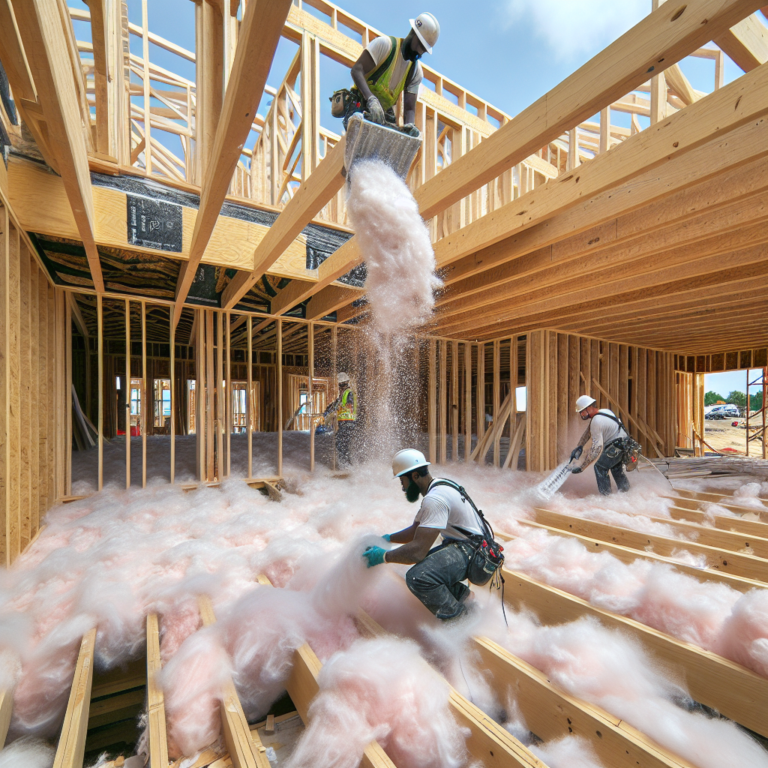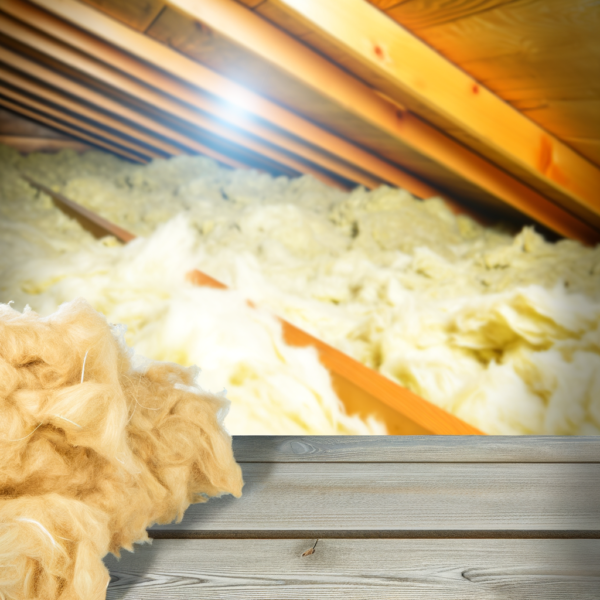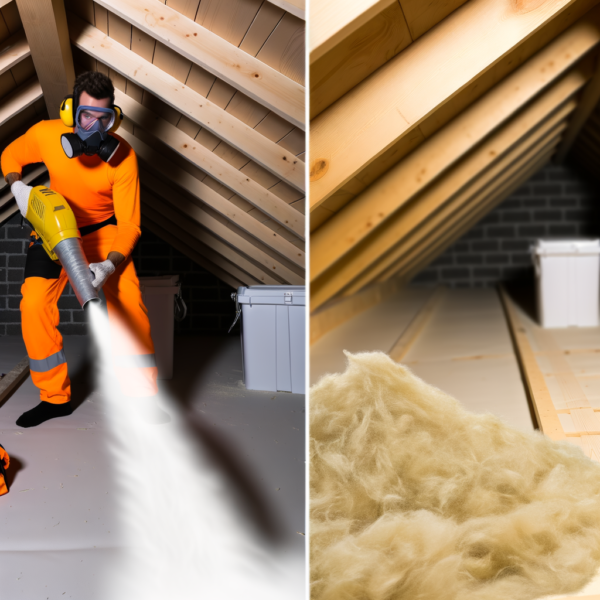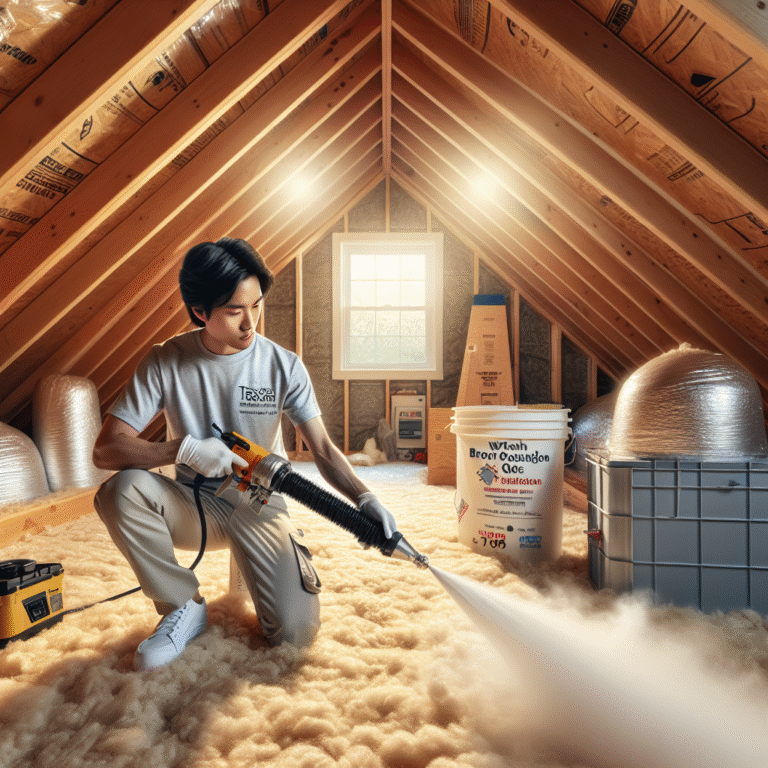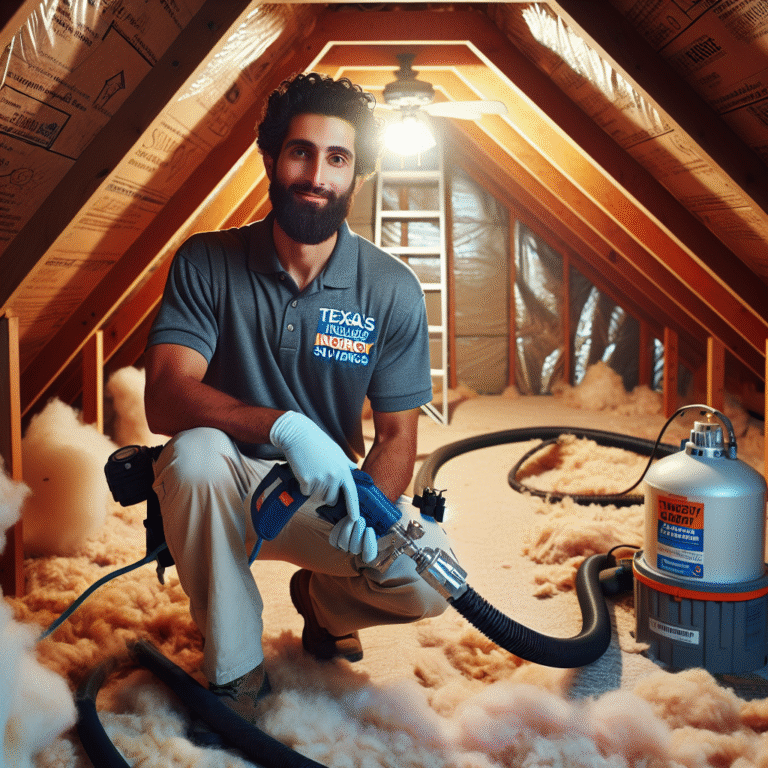-
Table of Contents
“Upgrade your home’s insulation with blown insulation – the efficient and cost-effective choice for maximum comfort and savings.”
Introduction
Blown insulation over batts is a popular method of insulating homes and buildings. It involves using loose insulation material, such as fiberglass or cellulose, to fill in the gaps and spaces between existing batt insulation. This technique is often used to improve the overall energy efficiency of a structure and can also help reduce noise levels. In this introduction, we will explore the benefits and considerations of using blown insulation over batts.
Benefits of Blown-In Insulation Over Batt Insulation for Attics
Insulating your attic is an important step in creating a more energy-efficient home. It helps to keep your home warm in the winter and cool in the summer, reducing your energy bills and making your living space more comfortable. When it comes to attic insulation, there are two main types: batt insulation and blown-in insulation. While both options have their benefits, blown-in insulation has become increasingly popular in recent years due to its many advantages over batt insulation.
One of the main benefits of blown-in insulation over batt insulation is its ability to fill in small gaps and crevices. Batt insulation, which comes in large rolls or sheets, can be difficult to install in tight spaces and corners. This can leave gaps in the insulation, reducing its effectiveness and allowing air to escape. On the other hand, blown-in insulation is made up of small particles that can easily fill in these small gaps, creating a more complete and efficient insulation barrier.
Another advantage of blown-in insulation is its ability to conform to any shape or size of attic. Batt insulation is often pre-cut to fit standard sizes, which can be a problem for attics with irregular shapes or obstructions such as pipes and ductwork. Blown-in insulation, however, can be easily blown into any space, ensuring that every nook and cranny is properly insulated. This makes it a great option for older homes with unique attic spaces.
In addition to its superior coverage, blown-in insulation also has a higher R-value than batt insulation. R-value is a measure of an insulation material’s ability to resist heat flow, with a higher R-value indicating better insulation. Blown-in insulation has a higher R-value per inch compared to batt insulation, meaning that it can provide better insulation with less material. This not only makes it more cost-effective but also allows for more flexibility in the amount of insulation that can be added to an attic.
One of the most significant benefits of blown-in insulation is its ability to reduce air leakage. Air leakage is a major cause of energy loss in homes, as it allows heated or cooled air to escape and outside air to enter. Batt insulation can leave gaps and seams that allow air to pass through, but blown-in insulation creates a more airtight seal. This can greatly improve the energy efficiency of your home and reduce your heating and cooling costs.
Another advantage of blown-in insulation is its fire resistance. Unlike batt insulation, which is made of flammable materials such as fiberglass or cellulose, blown-in insulation is typically made of fire-resistant materials such as rock wool or fiberglass. This can provide an added layer of protection for your home in case of a fire.
Lastly, blown-in insulation is a more environmentally friendly option compared to batt insulation. Batt insulation is often made from non-renewable materials and can be difficult to recycle. On the other hand, blown-in insulation is typically made from recycled materials and can be easily recycled at the end of its lifespan. This makes it a more sustainable choice for homeowners looking to reduce their environmental impact.
In conclusion, blown-in insulation offers many benefits over batt insulation for attics. Its ability to fill in small gaps, conform to any shape, and provide better coverage and R-value make it a more efficient and cost-effective option. It also helps to reduce air leakage, is fire-resistant, and is more environmentally friendly. If you are considering insulating your attic, be sure to explore the option of blown-in insulation for a more efficient and comfortable home.
Comparing the Top Blown-In Insulation Brands for Attic Use
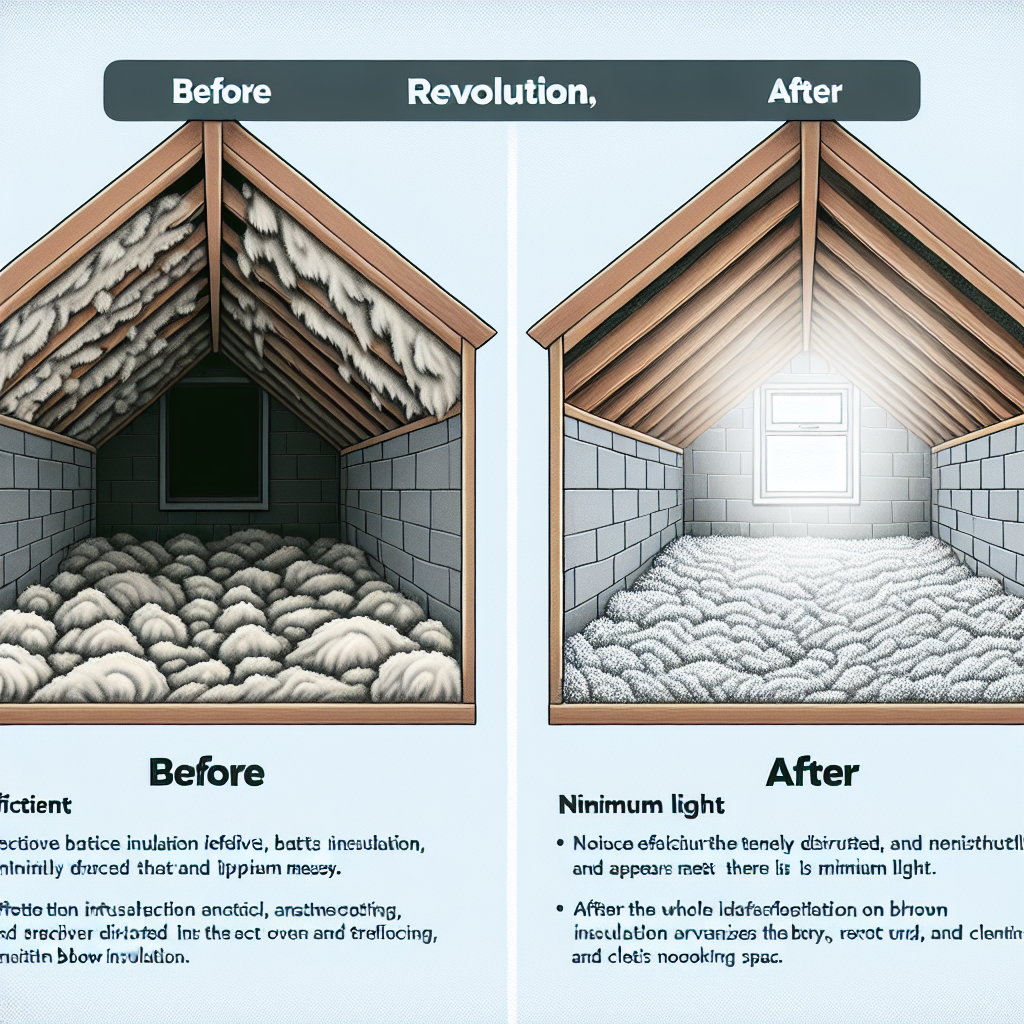
When it comes to insulating your attic, there are many options available on the market. One popular choice is blown-in insulation, which involves using a machine to blow loose insulation material into your attic space. This method is often preferred over traditional batt insulation, as it can provide better coverage and fill in hard-to-reach areas. However, with so many brands of blown-in insulation to choose from, it can be overwhelming to determine which one is the best for your attic. In this article, we will compare the top blown-in insulation brands for attic use, specifically focusing on the benefits of using blown insulation over batts.
One of the main advantages of blown-in insulation over batts is its ability to provide a more even coverage. Batt insulation, which comes in pre-cut sheets, can leave gaps and spaces in between each sheet, resulting in uneven coverage. This can lead to air leaks and reduced energy efficiency. On the other hand, blown-in insulation is able to fill in all the nooks and crannies of your attic, providing a more thorough and consistent layer of insulation. This can help to prevent air leaks and improve the overall energy efficiency of your home.
Another benefit of blown-in insulation is its ability to reach areas that are difficult to access. Attics often have tight spaces and corners that are hard to reach with batt insulation. This can result in uneven coverage and leave some areas of your attic vulnerable to heat loss. With blown-in insulation, a machine is used to blow the insulation material into these hard-to-reach areas, ensuring that every inch of your attic is properly insulated. This can also save you time and effort, as you won’t have to maneuver large batts into tight spaces.
In addition to its superior coverage, blown-in insulation also has a higher R-value compared to batt insulation. R-value is a measure of an insulation material’s ability to resist heat flow. The higher the R-value, the more effective the insulation is at keeping heat in or out. Blown-in insulation typically has a higher R-value per inch compared to batt insulation, meaning that you can achieve the same level of insulation with a thinner layer of blown-in insulation. This can be beneficial for attics with limited headroom, as it allows for more space for storage or other purposes.
When it comes to choosing a brand of blown-in insulation, there are a few top contenders in the market. One popular brand is Owens Corning’s AttiCat blown-in insulation. This brand is made from fiberglass and is known for its high R-value and ability to resist moisture. Another top brand is Johns Manville’s Climate Pro blown-in insulation, which is made from recycled materials and has a high R-value per inch. Both of these brands have been tested and certified for use in attics, ensuring that they meet safety and performance standards.
In conclusion, blown-in insulation offers many advantages over batt insulation when it comes to insulating your attic. Its ability to provide even coverage, reach difficult areas, and have a higher R-value make it a top choice for homeowners. When considering which brand to use, it is important to research and compare the different options available to find the best fit for your attic. With the right blown-in insulation, you can improve the energy efficiency of your home and create a more comfortable living space.
How to Properly Install Blown-In Insulation in Your Attic for Maximum Efficiency
When it comes to insulating your attic, there are two main options: batt insulation and blown-in insulation. While both can effectively keep your home warm in the winter and cool in the summer, blown-in insulation has become increasingly popular due to its efficiency and ease of installation. However, if you already have batt insulation in your attic, you may be wondering if you can simply add blown-in insulation on top of it. The answer is yes, but there are some important considerations to keep in mind to ensure maximum efficiency.
First and foremost, it is important to understand the difference between batt and blown-in insulation. Batt insulation, also known as blanket insulation, comes in pre-cut sheets made of fiberglass, mineral wool, or cotton. It is typically installed between the joists in your attic, creating a barrier against heat transfer. On the other hand, blown-in insulation is made of loose fibers, usually fiberglass or cellulose, that are blown into the attic using a special machine. This creates a more even layer of insulation and can fill in gaps and crevices that batt insulation may miss.
Now, let’s discuss the process of installing blown-in insulation over batts. The first step is to assess the condition of your existing batt insulation. If it is old, damaged, or compressed, it may not be as effective in insulating your home. In this case, it is recommended to remove the batt insulation before installing blown-in insulation. However, if the batt insulation is in good condition, you can proceed with adding blown-in insulation on top of it.
Before you begin the installation process, it is important to prepare your attic. This includes sealing any air leaks, such as gaps around pipes, vents, and electrical wires. These leaks can significantly reduce the effectiveness of your insulation. Additionally, make sure to wear protective gear, such as a mask and gloves, as the fibers in blown-in insulation can irritate the skin and lungs.
Next, you will need to rent a blowing machine from a home improvement store or hire a professional insulation contractor. The machine will come with instructions on how to operate it, but the general process involves loading the insulation into the machine and blowing it into the attic using a long hose. It is important to evenly distribute the insulation to achieve the desired R-value, which is a measure of insulation’s ability to resist heat transfer.
One of the main benefits of blown-in insulation is its ability to fill in gaps and crevices, creating a more airtight seal. However, this can also be a disadvantage if not done properly. If the insulation is blown in too densely, it can create a barrier that traps moisture and can lead to mold growth. On the other hand, if it is blown in too lightly, it may not provide enough insulation. It is important to follow the manufacturer’s instructions and use a ruler or measuring tape to ensure the proper depth of insulation.
In addition to proper installation, it is also important to consider the type of blown-in insulation you use. Fiberglass and cellulose are the most common options, with cellulose being more environmentally friendly as it is made from recycled materials. However, cellulose can settle over time, reducing its effectiveness, so it is important to periodically check and add more insulation if needed.
In conclusion, blown-in insulation can be a great option for adding additional insulation to your attic, even over existing batt insulation. However, it is important to properly assess the condition of your existing insulation, prepare your attic, and evenly distribute the blown-in insulation to ensure maximum efficiency. By following these steps, you can effectively insulate your attic and save on energy costs for years to come.
Q&A
1) What is blown insulation?
Blown insulation is a type of insulation material that is installed by blowing it into an area using specialized equipment. It is typically made of fiberglass, cellulose, or mineral wool and is used to improve the energy efficiency of a building by reducing heat loss.
2) How does blown insulation compare to batt insulation?
Blown insulation is generally considered to be more effective than batt insulation in terms of coverage and reducing air leakage. It can also be installed more quickly and easily in hard-to-reach areas. However, batt insulation may be more cost-effective in certain situations.
3) Can blown insulation be installed over existing batt insulation?
Yes, blown insulation can be installed over existing batt insulation. This can help improve the overall insulation and energy efficiency of a building. However, it is important to ensure that the existing batt insulation is in good condition and not compressed, as this can affect the effectiveness of the blown insulation. It is recommended to consult a professional for proper installation and to determine the best type of insulation for your specific needs.
Conclusion
In conclusion, blown insulation is a highly effective and efficient method for insulating a home or building. It offers superior coverage and can easily fill in gaps and hard-to-reach areas that traditional batt insulation may miss. Additionally, blown insulation can provide better soundproofing and moisture control. While batt insulation may be a more cost-effective option, blown insulation offers long-term savings through improved energy efficiency. Ultimately, the choice between blown insulation and batts will depend on the specific needs and budget of the individual, but blown insulation is a valuable option to consider for optimal insulation and comfort in a space.


